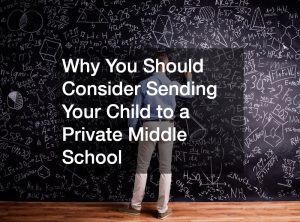Teachers’ employment status is a topic of debate and confusion, as they are often seen as public servants due to their essential role in society. Many questions arise regarding their classification as government employees, with implications for their benefits and job security. But the answer is not so simple. This article aims to understand the relationship between teachers and government employment comprehensively. Many factors contribute to this relationship, so it is essential to examine them thoroughly.
- II. Defining Government Employees
- III. Teachers in Public Schools
- IV. Private School Teachers
- V. Charter School Teachers
- VI. Benefits and Considerations
- VII. The Impact on Teacher Unions
- VIII. Statistics on Teacher Employment
- IX. Legal Aspects and Regulations
- X. The Role of Public Funding
- XI. Teachers in Non-Teaching Roles
- XII. The Future of Teacher Employment
- XIII. Conclusion
II. Defining Government Employees
Characteristics and Roles of Government Employees
Government employees, often called public servants, are individuals employed by local, state, or federal governmental bodies. They serve various roles across various sectors, including health, transportation, law enforcement, and education. Some key characteristics of government employees include employment stability, as they are less likely to face layoffs than private-sector workers. They can also access comprehensive benefits such as pension plans, health insurance, and paid leave.
Moreover, government employees are often bound by specific ethical standards and regulations due to the nature of their work, which frequently involves serving the public interest. Therefore, their roles often emphasize transparency, accountability, and public service. As for teachers, some argue that they fulfill these criteria, making them government employees. However, there are also arguments against this classification.
Significance of Government Employment
The significance of government employment extends beyond job stability and the provision of robust benefits. Being a government employee often comes with a sense of purpose and duty, as these roles are critical to maintaining societal order and serving citizens. These positions carry significant responsibilities, including adhering to stringent ethical guidelines and maintaining transparency.
Additionally, the benefits of government employment are substantial. They often include comprehensive healthcare, generous retirement packages, and ample paid time off, which can lead to a better work-life balance. Government employees often have more job security compared to their counterparts in the private sector. These benefits contribute to the allure of government employment.
Examples of Government Positions
Government positions span a wide range of sectors and levels of responsibility, each playing a crucial role in serving the public interest.
- Federal Employees: These include positions such as FBI agents, who are responsible for protecting and upholding the laws of the United States, and NASA scientists, who work on the exploration of outer space and the advancement of aeronautics research.
- State Employees: State employees include roles such as state troopers, who enforce state laws and maintain peace within the state’s jurisdiction, and state health department workers, who work on public health initiatives within the state.
- Local Government Employees: At the local level, examples include city planners, who oversee and plan the growth and development of a city, and public school teachers, who educate children within the local school district.
- Public Sector Healthcare Professionals: These include doctors and nurses in public hospitals, who provide healthcare services to citizens, and public health officials, who manage public health initiatives and outbreaks.
- Transportation Department Workers: This category includes roles such as bus drivers and train operators who provide essential transportation services to the public.
These examples reflect the diversity and scope of government positions, each contributing to the functioning and well-being of society in their unique ways.
III. Teachers in Public Schools
One of the most prevalent examples of government employment is that of teachers in public schools. Public schools are typically funded by local, state, and federal governments, making them a prime example of a government institution. Teachers in these schools are responsible for educating children and preparing them for their future roles in society.
In most cases, public school teachers are considered government employees because they work under the direction and control of the government. Government funds pay their salaries, and they often have access to benefits such as healthcare and retirement plans. Additionally, public school teachers must adhere to certain regulations and ethical standards outlined by the government.
The funding for public schools varies depending on the location and jurisdiction. In some cases, local property taxes fund public schools, while the state provides the majority of funding in others. Federal funds also play a role in financing public schools, typically through grants and programs targeted toward specific educational initiatives.
Some noteworthy examples of public school systems in the United States include:
- New York City Department of Education: This is the largest public school system in the US, with over 1 million students enrolled in more than 1,800 schools. It is primarily funded by local property taxes and state funding.
- Los Angeles Unified School District: This public school system serves over 600,000 students and is the second-largest in the country. It receives funding from local, state, and federal sources.
- Chicago Public Schools: This district serves over 350,000 students and is primarily funded by property taxes and state funding, with some federal funds allocated for specific programs.
These examples demonstrate the significant role of government employment in the education sector. Teachers in public schools play an essential role in shaping future generations and are considered integral government employees.
IV. Private School Teachers
Unlike public school teachers, private school teachers are not considered government employees. Private schools operate independently from the government, often funded by tuition payments, donations, and private grants. As such, teachers in these institutions are employed by these private entities rather than by the government.
The distinction between public and private school employment is most evident in the benefits and protections afforded to teachers. Private school teachers may not have access to the same benefits as public school teachers, such as pensions and collective bargaining rights. Individual contracts negotiated with their employers often determine their salaries and benefits.
Private school teachers, like public school teachers, play a vital role in educating students. It is important to note that while private school teachers do not enjoy government employee status, they are still bound by specific regulations, such as accreditation requirements and state teaching standards. These regulations ensure that despite the differences in employment, the quality of education provided remains high across both public and private sectors.
V. Charter School Teachers
Charter schools occupy a unique space in the education sector, blurring the line between public and private education. They are publicly funded but operate independently, often under a performance contract, or “charter,” with a state or local entity. This autonomy allows them to implement innovative teaching methods and curricula, making them an attractive choice for many parents and students.
From the employment perspective, charter school teachers are generally considered public employees since charter schools receive public funding. However, this classification can vary depending on the state and the structure of the charter school. Some charter schools are run by private, for-profit companies, potentially complicating the classification of their teachers’ employment status.
Charter school teachers may not have the same protections and benefits as regular public school teachers, as they are often exempt from specific state and district regulations. For example, they may not be covered by collective bargaining agreements, and their pay may be tied directly to performance rather than a set salary schedule.
Notable examples of charter school systems in the United States include:
- KIPP (Knowledge is Power Program): This initiative establishes a comprehensive network of tuition-free, open-enrollment schools across the United States, specifically targeting under-resourced communities. These schools aim to provide college-preparatory education, empowering students with the necessary tools and resources for success.
- Success Academy Charter Schools: This is the largest charter school network in New York City, with 47 schools serving 20,000 students.
VI. Benefits and Considerations
As mentioned earlier, government employment comes with various benefits and protections that make it an attractive career choice for many individuals. For teachers, these benefits are particularly valuable as they can contribute to their overall job satisfaction and well-being.
One of the most significant advantages of being considered a government employee is access to generous retirement plans. Teachers in public schools often have defined benefit pension plans, which guarantee a certain income level during retirement. This provides them financial security and peace of mind, knowing their future is cared for.
Furthermore, government employees, in most cases, have more job security than private sector workers. In the event of downsizing or budget cuts, teachers are less likely to face layoffs or furloughs, allowing them to consistently provide for themselves and their families.
The government also offers various initiatives to support teachers, such as loan forgiveness programs for those who work in public schools or in high-need subject areas. These programs help alleviate the financial burden of student loans and can attract more individuals to pursue teaching careers.
VII. The Impact on Teacher Unions
The classification of teachers as government employees can have a significant impact on teacher unions. Unions are crucial in advocating for teachers’ rights and benefits, such as fair wages, working conditions, and job security.
Teacher unions often negotiate with local or state governments over contracts that determine salaries and benefits. Sometimes, these negotiations may lead to strikes if an agreement cannot be reached. The status of government employees can influence these negotiations, as public school teachers may have more bargaining power and access to collective bargaining rights than private school teachers.
In recent years, there have been notable examples of teacher strikes and union negotiations related to government employment status. In 2018, West Virginia public school teachers went on strike for nine days, demanding higher pay and better benefits. A similar strike occurred in Los Angeles in 2019, with teachers demanding smaller classes and more support staff.
VIII. Statistics on Teacher Employment
According to the National Center for Education Statistics (NCES), during the 2020-21 school year, there were 3.5 million teachers in traditional public schools, 251,000 teachers in public charter schools, and 466,000 in private schools in the United States. This reflects the significant presence of government employment in the education sector, as public schools employ most teachers.
Furthermore, data from the National Center for Education Statistics (NCES) shows that teachers in public schools tend to be more diverse than private school teachers. For example, 20% of public school teachers identified as non-white, while only 12% of private school teachers did. In charter schools, the diversity among teachers falls in between, with 15% identifying as non-white.
These statistics demonstrate the impact of government employment status on the distribution and demographics of teachers across different types of schools. Government employees are more prevalent in public schools and tend to be more diverse than private school teachers.
IX. Legal Aspects and Regulations
The legal framework governing teacher employment is complex, involving a combination of federal and state laws and regulations. At the federal level, the main legislation that affects teachers’ rights and protections is the National Labor Relations Act (NLRA).
The NLRA protects workers’ right to form unions, engage in collective bargaining, and strike if necessary. However, public school teachers’ employment status as government employees can impact their ability to exercise these rights. For example, the NLRA exempts state and local government employees from its coverage, meaning they are not guaranteed collective bargaining rights.
At the state level, each state has its own laws and regulations governing teacher employment. These may include licensure requirements, tenure policies, collective bargaining rights, and other legal considerations. For example, some states have strict laws related to teacher strikes and labor negotiations that can impact teachers’ employment status.
X. The Role of Public Funding
The status of teachers as government employees is closely tied to the level of public funding allocated for education. As mentioned earlier, public schools rely heavily on government funds to operate, and this funding often determines the benefits and protections afforded to teachers.
Changes in public funding can have a direct impact on teacher employment status. For example, budget cuts or decreases in state or federal education funding may lead to teacher layoffs or furloughs. This can also affect the quality of education provided, as schools may have to cut resources and staff to compensate for reduced funding.
On the other hand, increases in public funding can positively impact teacher employment. For instance, increased funding may allow schools to hire more teachers, reduce class sizes, and provide better salaries and benefits. This can attract more individuals to pursue teaching careers and potentially improve the overall quality of education.
XI. Teachers in Non-Teaching Roles
For teachers who pursue roles outside of traditional classroom teaching, their employment status may still fall under the government employee category. These non-teaching positions include administrative roles like principals and school district leaders and specialized positions like counselors, librarians, and curriculum developers.
Teachers in these roles are vital in supporting the education system and are considered integral government employees. Depending on their specific job titles and responsibilities, they may also have access to the same benefits and protections as classroom teachers.
Examples of non-teaching roles in education that are considered government employment include:
- Superintendents: This is the top administrative position in a school district, overseeing all aspects of the district’s operations.
- School Counselors: These professionals provide students with social, emotional, and academic support.
- Special Education Teachers: These teachers work with students who have special needs or disabilities and require specialized instruction.
XII. The Future of Teacher Employment
Finally, it is worth considering how the landscape of teacher employment may continue to evolve. As technology and education continue to advance, new models of teaching and learning are emerging. This could have implications for teachers’ employment status and their roles and responsibilities.
One such emerging model is online or virtual schooling, where students learn remotely through digital platforms. This approach has become increasingly popular, especially with the COVID-19 pandemic forcing many schools to adopt virtual learning. With online schooling, teachers may not be confined to a specific physical location and could potentially work from anywhere in the world.
Moreover, there is also a growing movement towards project-based and personalized learning, where students engage in hands-on projects that align with their interests and abilities. This approach challenges the traditional model of one teacher delivering lectures to a classroom of students and could impact the distribution and role of teachers in education.
Another trend is the rise of charter schools, which was discussed earlier. As these schools expand, they may provide more employment opportunities for teachers outside of traditional public school systems. This could shift the balance between government and private employment in the education sector.
XIII. Conclusion
The status of teachers as government employees has significant implications for their rights, benefits, and job security. While this classification has advantages and considerations, it is clear that teachers play a vital role in our education system and should be valued and supported in their careers. As the education landscape continues to evolve, so too may the role and status of teachers, but their importance in shaping future generations remains unchanged.
So, it is essential to continue exploring and discussing the various aspects of government employment for teachers to ensure they have the necessary support and resources to thrive in their profession. The education sector is constantly evolving and adapting. As such, it is crucial to stay informed about the changing landscape of teacher employment and its impact on society as a whole.
















